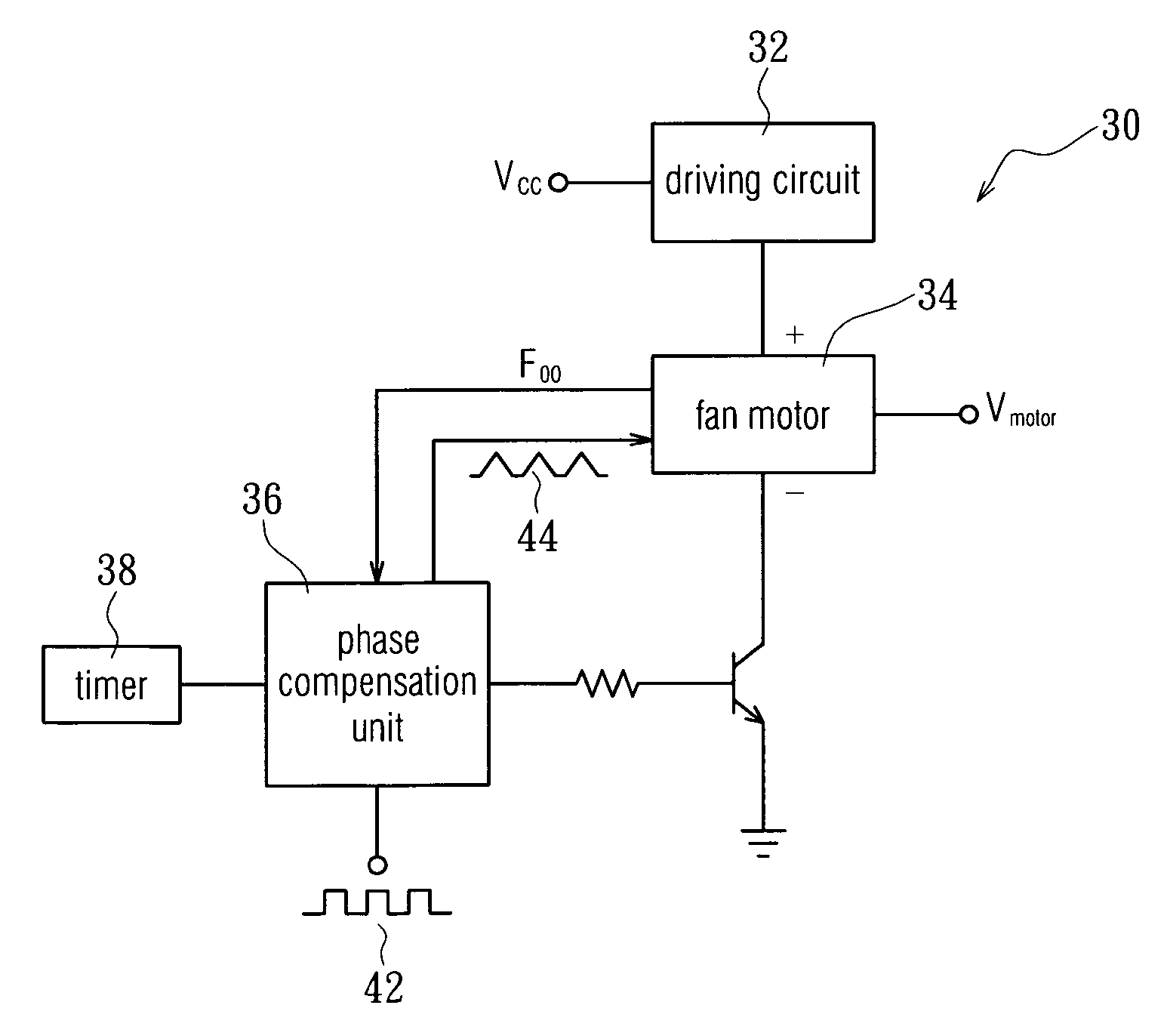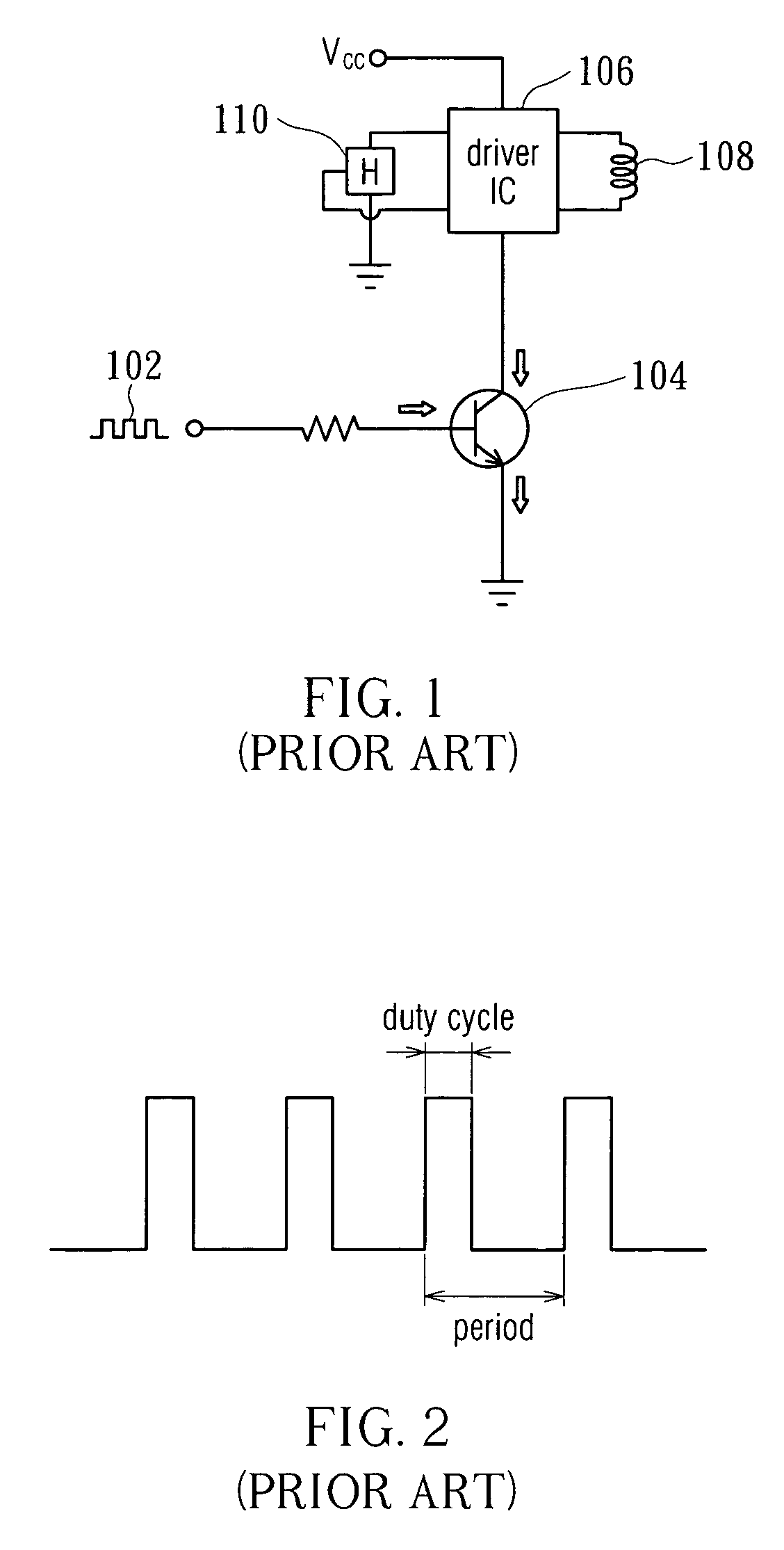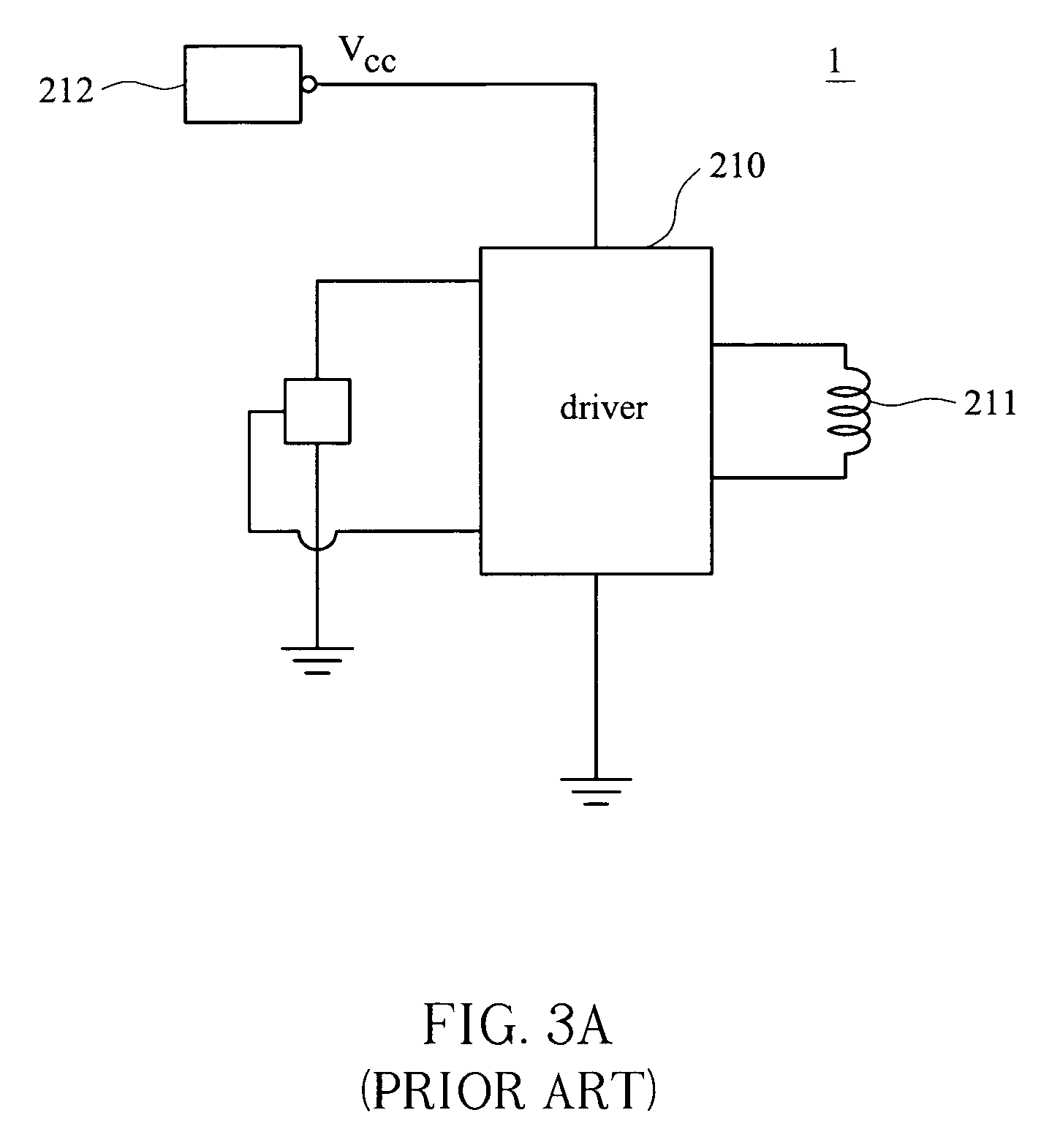Fan speed control circuit
a technology of speed control circuit and fan motor, which is applied in the direction of motor/generator/converter stopper, electronic commutator, dynamo-electric converter control, etc., can solve the problems of narrow speed control range, high output ripple, etc., and achieve the effect of reducing vibration and noise in the fan motor
- Summary
- Abstract
- Description
- Claims
- Application Information
AI Technical Summary
Benefits of technology
Problems solved by technology
Method used
Image
Examples
Embodiment Construction
[0035]FIG. 5A is a schematic diagram illustrating the angular position of the rotor 12 relative to the stator 10 in a four-pole DC motor; FIG. 5B illustrates the current waveform of the four-pole DC motor shown in FIG. 5A during unloaded operations, wherein the horizontal axis shows the clockwise-rotating angle (angular position θ) of the rotor 12.
[0036]Comparing the relative angular position of the stator 10 and the rotor 12 in FIG. 5A with the current waveform in FIG. 5B, it can be seen that, for a four-pole motor, the current waveform abruptly changes due to the cogging torque when the rotor 12 rotates to angular positions near nπ / 2 (n=1, 2, 3 . . . ). For instance, after the rotor 12 starts to rotate clockwise from point A, the current waveform abruptly changes when the rotor 12 rotates to an angular position between θ1 (point A′) and π / 2 (point B), and the same is true with each of the other π / 2 periods. On the other hand, since the rotor 12 is divided into four magnetic region...
PUM
 Login to View More
Login to View More Abstract
Description
Claims
Application Information
 Login to View More
Login to View More - R&D
- Intellectual Property
- Life Sciences
- Materials
- Tech Scout
- Unparalleled Data Quality
- Higher Quality Content
- 60% Fewer Hallucinations
Browse by: Latest US Patents, China's latest patents, Technical Efficacy Thesaurus, Application Domain, Technology Topic, Popular Technical Reports.
© 2025 PatSnap. All rights reserved.Legal|Privacy policy|Modern Slavery Act Transparency Statement|Sitemap|About US| Contact US: help@patsnap.com



